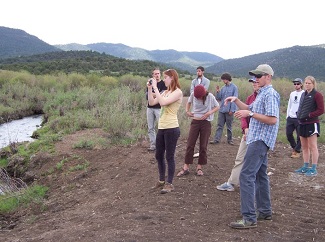Provisions within the Act Could Halt Pebble Mine in the Heart of Wild Alaska Trout Unlimited today congratulated the Environmental Protection Agency for putting the Clean Water Act into action and potentially halting the infamous Pebble Mine in the headwaters of Alaska’s storied Bristol Bay watershed.
“It is difficult to overstate the significance of this announcement. If the EPA follows the science and follows through on this, it will rank as one of the most significant conservation achievements of the past 50 years,” said Trout Unlimited president and CEO, Chris Wood. “This is one of the few places left on earth where nature works as it should, and it’s a breadbasket for the world, supplying literally hundreds of thousands of people with wild salmon.”
By putting into action Section 404 (c) of the Clean Water Act, the EPA is starting a process that will determine if large-scale mining in the Bristol Bay watershed of southwest Alaska, specifically the Pebble deposit, can co-exist with the area’s renewable natural resources, most importantly the waters that provide the spawning and rearing habitat for the world’s largest sockeye salmon, as well as trophy rainbow trout, Dolly Varden, Arctic grayling and four other Pacific salmon species.
An EPA watershed report produced last year makes it clear that mining in this area would damage vital salmon habitat and, in the event of spills or accidents, put that habitat in imminent danger in perpetuity. By putting the process outlined in the Clean Water Act into play, the EPA is setting a very high—but reasonable and appropriate—bar for Pebble Mine to get over and prove there won’t be impacts to water quality and the region’s irreplaceable fishery.
“This is a very proactive and thoughtful decision on the part of the EPA, and we at Trout Unlimited join with the millions of sportsmen and women across America in congratulating Administrator McCarthy for taking this important step,” said Steve Moyer, vice president for government affairs. “This issue has been our top conservation issue for nearly a decade, and our volunteers from all over the country have worked very hard to get to this point. We’re very pleased that the EPA has heard our voices, and we are grateful that it is translating the desires of millions of anglers into action.”
Bristol Bay’s salmon provide upwards of 14,000 jobs in Alaska and the Northwest every single year, and about half of the world’s annual sockeye salmon harvest comes from this region. Additionally, this area of Alaska is known for its unparalleled sportfishing—it’s probably the best place in North America to catch rainbow trout that will stretch a tape to 30 inches or more.
“This is the best place in the world to fish for salmon and trout, period,” said Tim Bristol, director of TU’s Alaska Program. “Sportsmen and women from Alaska and all over the United States have led the charge against Pebble Mine and for the protection of Bristol Bay’s salmon and trout for a long time. To see the process put in place that could protect thousands of long-term jobs in the commercial fishing industry and the opportunity for coming generations to fish for salmon and trout in Alaska is very gratifying. While we won’t know the outcome of this process for some time, it’s clear the EPA is listening to anglers, hunters and the people of Bristol Bay. I hope sportsmen and women all over America will join me in applauding the EPA for taking this bold step.”
---Chris Hunt, National Director of Communications, chunt@tu.org










